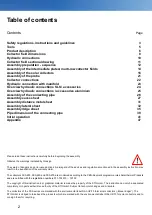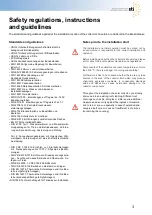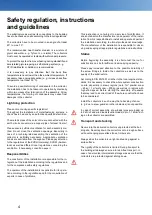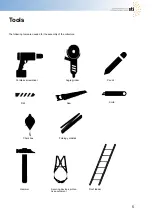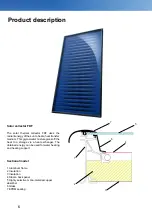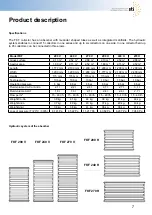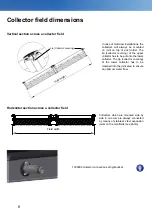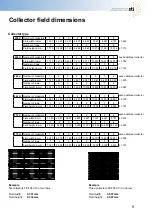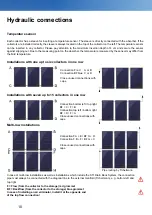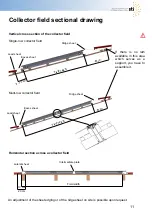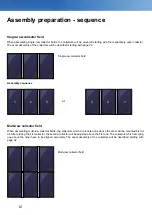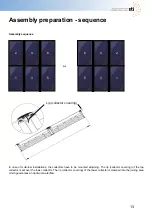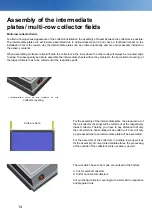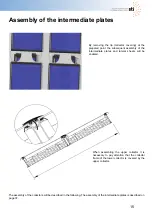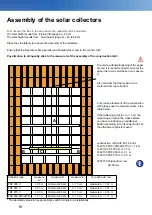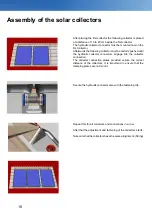
3
Standards and guidelines
• VBG 4 Unfallverhütungsvorschriften Elektrische
Anlagen und Betriebsmittel
• VBG 37 Unfallverhütungsvorschrift Bauarbeiten
• VBG 74 Leitern und Tritte
• ZVDH, Regelwerk
• LBO’s Landesbauordnungen der Bundesländer
• DIN 18299 Allgemeine Regelung für Bauarbeiten
jeder Art
• DIN 18334 Zimmer- und Holzbauarbeiten
• DIN EN 12828:2013-04 Heizungsanlagen in Gebäuden
• DIN 18338 Dachdeckungs- und
Dachabdichtungsarbeiten
• DIN 18339 Klempnerarbeiten
• DIN 18351 Fassadenarbeiten
• DIN 18360 Metallbauarbeiten, Schlosserarbeiten
• DIN 18381 Gas-, Wasser- und Abwasser-
installationsanlagen
• DIN 18451 Gerüstarbeiten
• DIN DIN 1055 – Einwirkungen auf Tragwerke - Teil 2:
Bodenkenngrößen
• DIN EN 1991 Einwirkungen auf Tragwerke Teil 1-7
• DIN 4708 Teil 3 Zentrale Brauchwasser-
erwärmungsanlagen
• DIN 4102 Brandverhalten von Baustoffen und
Bauteilen
• DIN 4109 Schallschutz im Hochbau
• DIN EN 516 Einrichtungen zum Betreten des Daches
• EN 517 Sicherheitsdachhaken
• DIN 4753 Teil 1 Wassererwärmer und Wassererwär
-
mungsanlagen für Trink- und Betriebswasser; Anforde-
rungen, Kennzeichnung, Ausrüstung und Prüfung
Teil 2: Sonnenheizungsanlagen mit organischen Wär
-
meträgern; Anforderungen an die sicherheitstechnische
Ausrüstung
• DIN VDE 0100-510 Errichten von Starkstromanlagen
mit Nennspannungen bis 1000 V; Allgemeine Bestim
-
mungen
• DIN VDE 0100-737 Errichten von Niederspannungsanla
-
gen - Feuchte und nasse Bereiche und Räume und An-
lagen im Freien
• DIN EN 62305-1; VDE 0185-305 Blitzschutz
• DIN VDE 0105-100 Betrieb von elektrischen Anlagen
•
DIN EN 12976: Thermische Sol
aranlagen und ihre Bau-
teile (vorgefertigte Anlagen)
• DIN EN
12977: Thermische S
olaranlagen und ihre Bau-
teile (kundenspezifisch gefertigte Anlagen)
•
DIN 1988: Technische Regeln für Trinkwasser-Installation
Notes prior to the installation start
The installation and initial operation must be carried out by
an expert who is responsible for the correct installation and
operation.
Before installing and putting the collectors into service, please
inform about the local engineer standards and regulations.
Components of the collectors can reach temperatures of more
than 200 °C, there is a danger of burning and scalding!
Furthermore it has to be checked whether there are any load
sources in the area of the collector field which may produce
chemically aggressive mediums. In condensate dissolved
acids and bases may cause permanent damage to the
collector components.
Throughout the installation of a solar collector, you directly
intervene into an existing roof cladding. Different roof
coverings such as tile, shingles or slate require additional
measures as a security against the ingress of mousture
due to rain or snow - especially in case of extended and
occupied top floors or in case of insufficient roof pitches
(concerning the covering).
The standards and guidelines applied at the installation location of the collectors have to be considered in the latest release.
Safety regulations, instructions
and guidelines
Summary of Contents for FKF 200
Page 1: ...Assembly instructions Solar collectors FKF 200 240 270 Roof integrated installation...
Page 43: ...43 Initial operation Schematic drawing of the system construction and piping scheme...
Page 44: ...44 Initial operation Schematic drawing of the system construction and piping scheme...
Page 45: ...45 Notes Initial operation...
Page 46: ...46 Notes Initial operation...


